Address
304 North Cardinal St.
Dorchester Center, MA 02124
Work Hours
Monday to Friday: 7AM - 7PM
Weekend: 10AM - 5PM
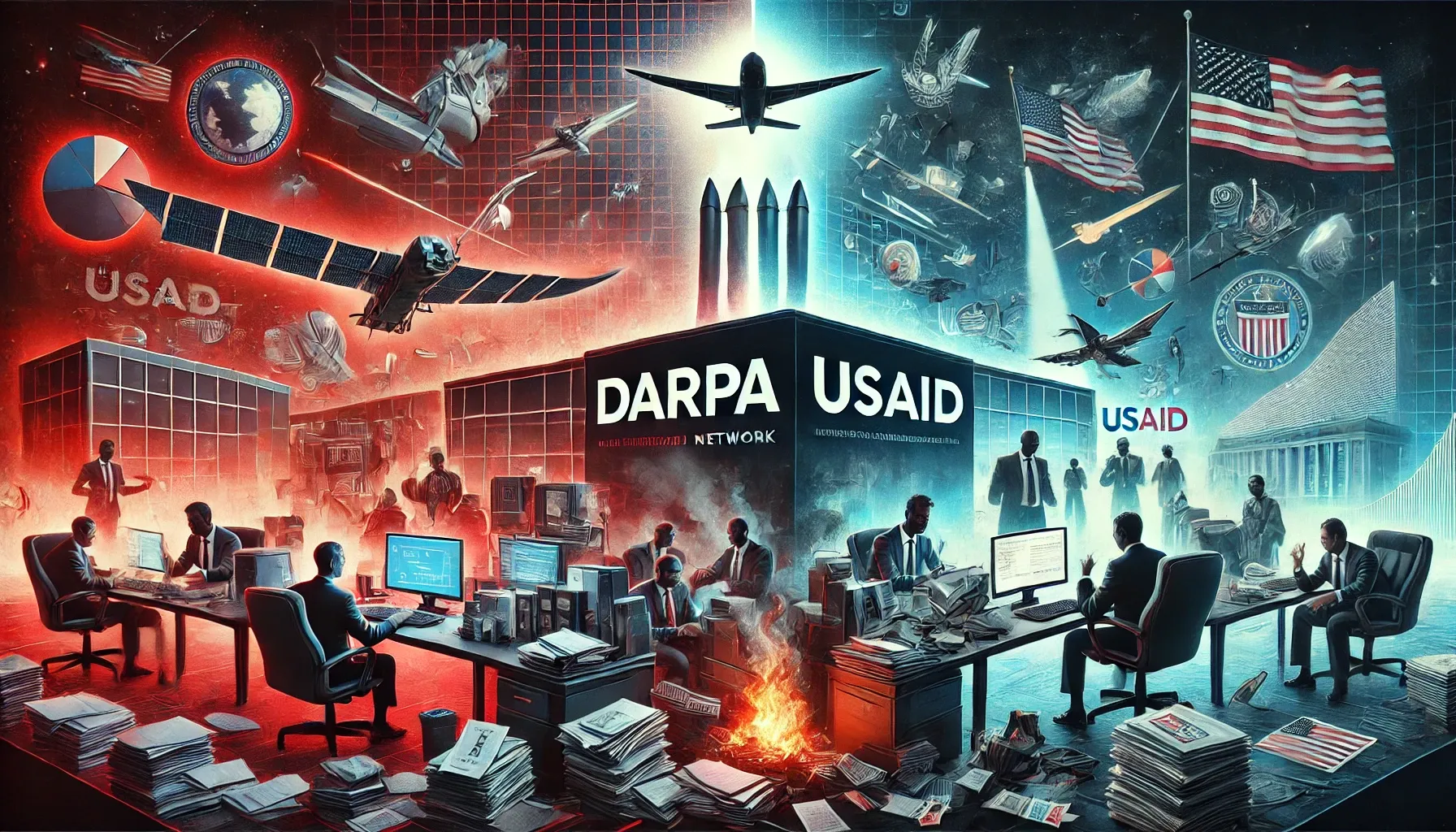
Written by Kevin J.S. Duska Jr. & Margot Lanihin
In fiscal year 2023, USAID received a staggering $40 billion in funding—more than ten times the budget of DARPA (McCabe, 2025). That’s more money than entire national defense programs get, all in the name of “foreign aid.” But here’s the problem: USAID has spent hundreds of billions over the past two decades, yet developing nations remain just as dependent on aid as ever (U.S. Government Accountability Office [GAO], 2024). Why? Because USAID isn’t in the business of solving problems—it’s in the business of sustaining itself.
Meanwhile, DARPA—the U.S. military’s high-risk, high-reward innovation hub—works with a mere $4 billion. Yet, it has single-handedly invented the modern world:
✔️ The internet? DARPA.
✔️ GPS? DARPA.
✔️ Artificial intelligence? DARPA.
✔️ Cybersecurity? DARPA (Defense Advanced Research Projects Agency [DARPA], n.d.).
With just a fraction of USAID’s bloated budget, DARPA delivers real-world results that shape technology, defense, and global security. USAID, by contrast, spends billions on “awareness campaigns,” consulting fees, and workshops—but never delivers tangible results.
USAID’s budget is opaque, inefficient, and riddled with waste. It funnels money through layers of contractors and NGOs, creating a foreign aid laundering machine where most funds never reach the people they’re meant to help (GAO, 2024). And because USAID measures success by how much it spends, not by actual results, the cycle of waste and dependency continues.
This article will pull back the curtain on USAID’s massive budget, failed projects, and endless bureaucracy, comparing it to DARPA’s lean, results-driven innovation machine. The verdict? One builds the future. The other burns through your tax dollars.

In fiscal year 2023, the United States Agency for International Development (USAID) managed over $40 billion in appropriations, representing more than one-third of the funds allocated in the Department of State, Foreign Operations, and Related Programs budget (McCabe, 2025). This colossal budget surpasses that of many federal agencies, yet the tangible benefits of such expenditure remain elusive.
Breaking Down the Black Hole
Administrative Overhead & Corruption
In summary, despite its substantial budget, USAID’s approach to foreign aid is marred by inefficiency, lack of accountability, and projects that fail to deliver sustainable results. The agency’s operations often prioritize bureaucratic processes over tangible development, leading to a significant waste of taxpayer dollars.
In stark contrast to USAID’s sprawling budget, the Defense Advanced Research Projects Agency (DARPA) operates with a lean fiscal allocation. The President’s fiscal year 2025 budget request for DARPA stands at $4.369 billion, with the fiscal year 2024 enacted budget at $4.122 billion. Despite this modest funding, DARPA has been the driving force behind transformative technologies that have redefined both military and civilian landscapes.
DARPA’s Budget vs. USAID’s
DARPA’s Actual Deliverables
Efficiency Model: Risk vs. Bureaucracy
In summary, DARPA exemplifies how a focused mission, lean budget, and a culture of innovation can yield transformative results. Its successes stand in sharp contrast to agencies burdened by extensive budgets and bureaucratic inefficiencies, highlighting the value of strategic investment in research and development.

The United States Agency for International Development (USAID) commands a $40 billion+ budget, yet where this money truly ends up remains largely unknown. While the agency promotes “transparency” in its mission statements, the reality is that its funding structure is deliberately opaque. Much of it flows through multiple layers of contractors, NGOs, and consulting firms, creating an aid laundering system where funds often vanish before making any measurable impact (Office of Inspector General [OIG], 2025).
Meanwhile, American taxpayers fund this charade. Projects are approved, money is allocated, but the same initiatives are funded every five years because nothing actually gets fixed. From failed agriculture programs to perpetually “rebuilt” infrastructure, USAID’s budget operates like a Ponzi scheme, ensuring continuous funding cycles but no actual results (Government Accountability Office [GAO], 2024). This raises the central question: Where does the money actually go?
One of the biggest hurdles in tracking USAID funds is the multi-layered financial shell game it plays. The agency does not operate most projects directly. Instead, it funnels money through massive development contracts, which are then subcontracted to NGOs, which further subcontract to local groups—resulting in a trail so complex that even oversight bodies struggle to follow it (GAO, 2024).
A 2025 report from the USAID Office of Inspector General found that major recipients of USAID funds, including United Nations agencies and foreign-based NGOs, refused to disclose financial records related to alleged corruption and known terrorist financing (OIG, 2025). Even more concerning, USAID itself does not fully vet its aid recipients, leaving funds susceptible to misuse.
A prime example is the $500 million allocated for “local governance training” in Afghanistan. The program was fully funded, repeatedly renewed, but left no lasting institutions—and after the Taliban takeover, it was impossible to determine where the money actually went (GAO, 2024). $500 million gone. Zero results.
Corruption is not a bug in USAID’s system—it is a feature. The way USAID allocates funds allows for financial leakage at nearly every step. A notorious example is International Relief and Development Inc. (IRD)—one of USAID’s largest contractors. In 2015, IRD was suspended from federal contracting after it was caught billing USAID $1.1 million for luxury staff parties at exclusive resorts (Federal Register, 2016).
This wasn’t an isolated case.
USAID routinely signs contracts with vague deliverables, allowing contractors and NGOs to spend excessively on administration while producing little tangible work. One government audit found that out of $142 billion in USAID contracts, the agency could not account for over $3 billion in overhead charges (GAO, 2024).
Worse, USAID’s primary measure of success is not whether a project worked, but how much money was spent. This ensures a never-ending cycle of spending for the sake of spending.
USAID’s defenders argue that the agency provides critical foreign aid, yet it cannot point to long-term success stories. Instead, American taxpayers fund an industry of endless “impact reports” and “awareness campaigns” that justify more funding requests rather than actually solving problems (GAO, 2024).
A 2025 survey by Public First for the Financial Times found that 60% of American voters believe that foreign aid is largely wasted due to corruption and administrative fees, with only 12% believing it was effectively spent (Public First, 2025).
Compare this to DARPA, an agency that operates with a fraction of USAID’s budget but produces groundbreaking technological advancements—from the Internet and GPS to AI and cybersecurity. Unlike USAID, DARPA’s projects produce tangible, trackable results.
USAID is not designed to eliminate poverty or develop nations—if it were, countries would eventually stop needing its money. Instead, it ensures continuous dependency, enabling a permanent aid industry that thrives on failure.
Without fundamental reform in oversight, transparency, and accountability, USAID will continue to function as a $40 billion black hole—funded by taxpayers, benefiting only the bureaucrats, contractors, and consultants who profit from endless aid cycles.
The real question: How long are we going to keep paying for it?
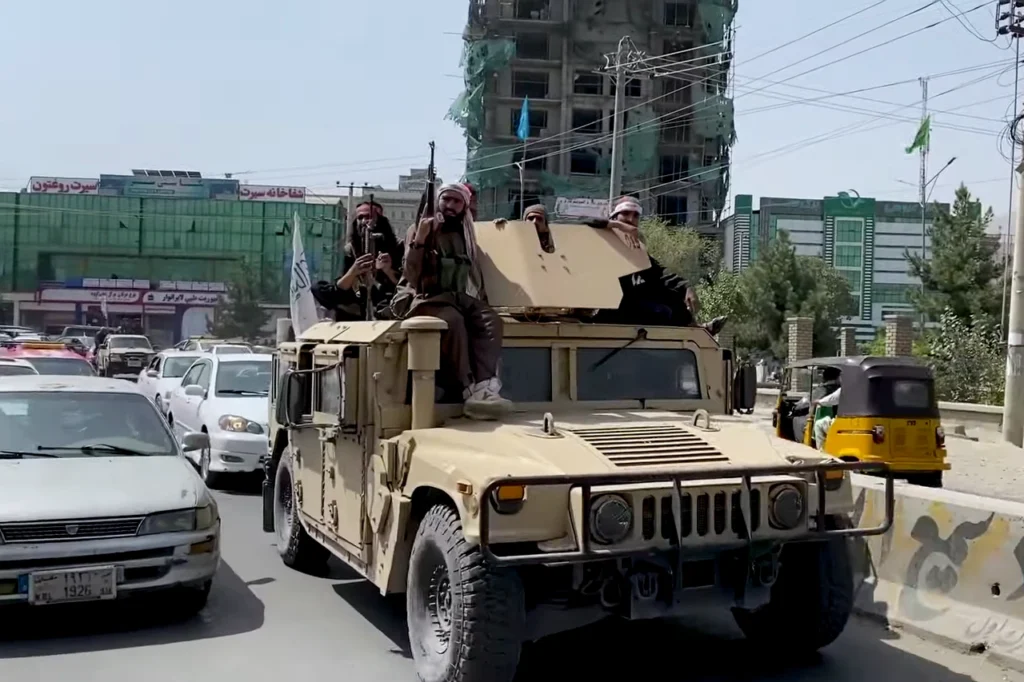
In the realm of government spending, few areas are as shrouded in secrecy as the black budget—funds allocated for classified or covert operations, often without public oversight. The Defense Advanced Research Projects Agency (DARPA), renowned for its groundbreaking innovations, operates with a portion of its budget under this veil of secrecy. This section explores the rationale behind DARPA’s black budget, its implications for transparency, and the contrasting scrutiny faced by agencies like the United States Agency for International Development (USAID).
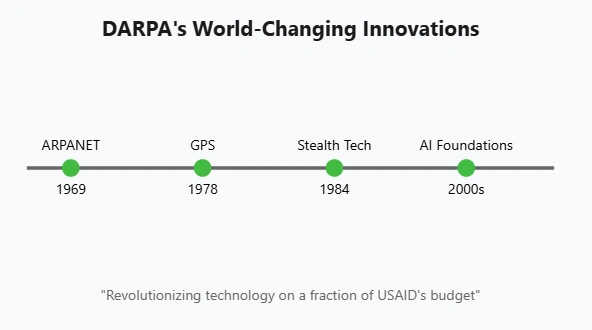
A black budget refers to government funds set aside for classified or secret operations, particularly in defense and intelligence sectors. These budgets are not subject to standard public disclosure, ostensibly to protect national security interests. In the United States, the black budget encompasses expenditures for espionage, covert military programs, and advanced research projects. Estimates suggest that the U.S. black budget exceeds $50 billion annually, accounting for a significant portion of defense spending (Gellman & Miller, 2013).
DARPA’s Role in the Black Budget
DARPA, as the Pentagon’s research arm, is a key beneficiary of black budget allocations. While the agency’s total budget for fiscal year 2025 is publicly stated as $4.369 billion (Defense Advanced Research Projects Agency [DARPA], n.d.-a), a portion of this funding is designated for classified projects. These projects often involve cutting-edge technologies with potential military applications, such as advanced weapon systems, cybersecurity initiatives, and space-based defense mechanisms. The secrecy surrounding these projects is justified by the need to maintain a strategic advantage over potential adversaries.
Proponents of the black budget argue that secrecy is essential for national security. Classified funding allows agencies like DARPA to pursue high-risk, high-reward projects without exposing sensitive information that could be exploited by adversaries. Historical precedents, such as the development of stealth technology and the Blackjack program—which aims to create a global high-speed network in low Earth orbit—underscore the strategic value of maintaining confidentiality in defense research (DARPA, n.d.-b).
Despite the perceived necessity of secrecy, the black budget raises significant concerns regarding transparency and accountability. The lack of public oversight can lead to unchecked spending and potential misuse of funds. Critics argue that without adequate scrutiny, there is a risk of fostering an environment where financial mismanagement or ethically questionable projects can flourish. The challenge lies in balancing the imperative of national security with the public’s right to know how taxpayer dollars are being utilized.
While DARPA operates under the protective cloak of the black budget, USAID faces intense public and governmental scrutiny over its expenditures. USAID’s budget allocations are subject to detailed reporting requirements, audits, and public disclosures. This transparency, while promoting accountability, also exposes the agency to criticism regarding inefficiencies, mismanagement, and the effectiveness of its aid programs. The disparity in oversight between DARPA and USAID highlights a broader debate about the allocation of public funds:
The black budget serves as a double-edged sword in government operations. For agencies like DARPA, it provides the necessary secrecy to develop technologies crucial for national security without the risk of compromising sensitive information. However, this lack of transparency can lead to concerns about unchecked spending and accountability. In contrast, agencies like USAID operate under stringent public oversight, promoting transparency but also exposing them to bureaucratic challenges and public criticism. Striking a balance between secrecy for security and transparency for accountability remains a complex but essential endeavor in public administration.
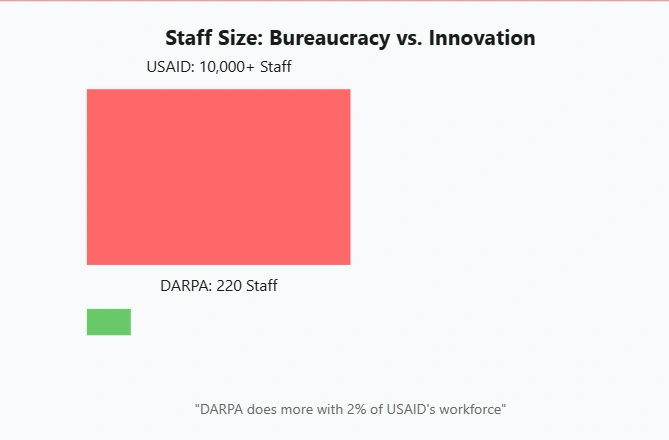
The United States Agency for International Development (USAID) is often portrayed as a benevolent entity, delivering humanitarian aid and fostering development in emerging nations. However, beneath this altruistic veneer lies a complex web of geopolitical maneuvering and covert operations that have, at times, undermined the very democracies the agency purports to support. This section delves into USAID’s entanglement in political interventions, its clandestine collaborations, and the implications of its dualistic role on global perceptions of American foreign aid.
Since its inception in 1961, USAID has been instrumental in advancing U.S. foreign policy objectives, often extending beyond mere development assistance. The agency has been implicated in efforts to influence political outcomes in various countries, aligning with U.S. strategic interests. For instance, during the Vietnam War, USAID operated alongside the Central Intelligence Agency (CIA) in programs like the Wapi Project, which, under the guise of civic action, aimed to train local militias and establish control over strategic regions (Conboy & Morrison, 1995).
In Latin America, USAID’s involvement has been equally contentious. In Bolivia, the agency was accused of channeling funds to undermine the government of President Evo Morales, allegedly supporting opposition groups and social movements to destabilize the administration (Dangl, 2008). Such actions have fueled skepticism about USAID’s true intentions, casting doubt on its commitment to genuine development.
USAID’s collaboration with intelligence agencies, particularly the CIA, has been a subject of scrutiny and debate. The agency’s programs have occasionally served as fronts for covert operations, blurring the lines between development aid and espionage. A notable example is the ZunZuneo project in Cuba, a social media platform secretly created by USAID to incite political unrest and challenge the Cuban government. The platform, which masqueraded as a harmless communication tool, sought to exploit social networks to foment dissent, all while concealing its origins and true purpose (The Guardian, 2014).
Such covert initiatives have not been limited to distant history. Recent reports suggest that USAID has continued to operate in tandem with intelligence agencies to further U.S. geopolitical interests. In some instances, the agency’s programs have been leveraged to gather intelligence under the pretext of humanitarian assistance, raising ethical concerns and questions about the legitimacy of its operations (Parry, 2025).
Beyond covert operations, USAID functions as a pivotal instrument of U.S. soft power, wielding influence through economic aid and development programs. While these initiatives are often framed as altruistic endeavors, they frequently serve to advance American geopolitical interests. By providing aid, the U.S. can cultivate alliances, open markets for American businesses, and counter the influence of rival nations. However, this strategy is not without controversy. Critics argue that such aid can foster dependency, perpetuate unequal power dynamics, and impose Western values on recipient countries, leading to cultural erosion and resistance (Roy, 2025).
The dual role of USAID as both a development agency and a vehicle for political intervention has profound implications for how U.S. foreign aid is perceived globally. Countries receiving aid may question the agency’s motives, viewing assistance packages with suspicion and skepticism. This erosion of trust can hinder genuine development efforts, as local populations and governments may resist programs perceived as tools of foreign influence.
Moreover, the entanglement of aid with political objectives can lead to unintended consequences, such as the destabilization of regions and the exacerbation of conflicts. By prioritizing strategic interests over the genuine needs of communities, USAID risks undermining its stated mission of promoting sustainable development and democracy.
While USAID has undoubtedly contributed to various development successes worldwide, its history is marred by instances of political meddling and covert operations that complicate its legacy. The agency’s dualistic nature—as both a provider of aid and a facilitator of U.S. geopolitical strategy—raises critical questions about the ethics and efficacy of foreign assistance. For USAID to rebuild trust and fulfill its humanitarian mission, a reevaluation of its practices and a recommitment to transparency and genuine partnership with recipient nations are imperative.
In a move that has sent shockwaves through the international aid community, President Donald Trump, with the assistance of Elon Musk, has initiated a rapid dismantling of the United States Agency for International Development (USAID). This unprecedented action has not only restructured the agency but has also precipitated a cascade of global consequences, affecting millions who rely on U.S. foreign assistance.

Established in 1961, USAID has been a cornerstone of U.S. foreign policy, administering civilian foreign aid and development assistance worldwide. In fiscal year 2023, the agency managed over $40 billion in appropriations, supporting programs in global health, humanitarian aid, and economic development (McCabe, 2025). However, under the Trump administration’s directive, USAID’s workforce has been slashed from approximately 10,000 employees to fewer than 300, effectively crippling its operational capacity (Demirjian, 2025).
Elon Musk, appointed as a special government employee to spearhead cost-cutting measures, labeled USAID a “criminal organization” and advocated for its dissolution (Hansler et al., 2025). This rhetoric has been matched by swift action: the agency’s funding has been frozen, ongoing projects halted, and staff placed on administrative leave. The remaining personnel are now confined to mission-critical roles, primarily in health and humanitarian assistance (Demirjian, 2025).
The abrupt dismantling of USAID has triggered a series of adverse effects across the globe:
These developments have not only precipitated immediate humanitarian concerns but have also weakened the United States’ soft power, as traditional allies and aid recipients reassess their reliance on U.S. support.
The decision to dismantle USAID has been met with widespread condemnation:
Proponents of the dismantling assert that USAID had become bloated and inefficient, with funds often misallocated to projects misaligned with national interests. They cite instances of mismanagement, such as the agency reportedly funding the college tuition of Anwar al-Awlaki, an al-Qaeda terrorist with ties to the 9/11 hijackers (USAID reportedly bankrolled al Qaeda terrorist’s college tuition, 2025). This perspective suggests that the agency’s dissolution is a necessary step toward reducing graft and ensuring taxpayer money is spent effectively.
The dismantling of USAID represents a seismic shift in U.S. foreign policy, with far-reaching implications for global development and humanitarian efforts. While the move addresses concerns about bureaucratic inefficiency and mismanagement, it also raises critical questions about the United States’ role in international aid and the potential consequences of withdrawing support from vulnerable populations worldwide. As the global community grapples with these changes, the true impact of the Trump-Musk purge on USAID and those it served remains to be fully understood.
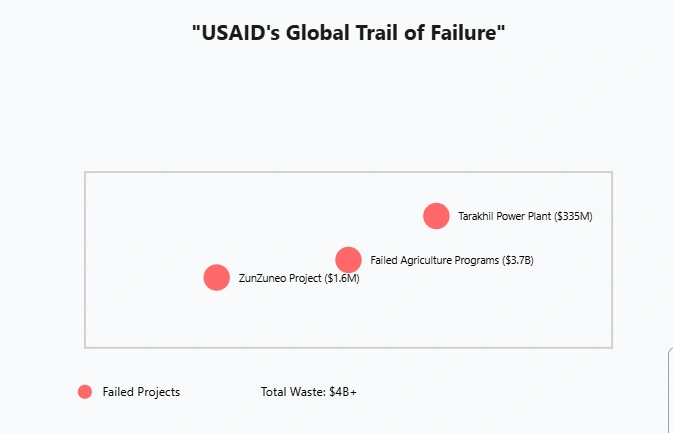
For decades, USAID has been a sacred cow of U.S. foreign policy, framed as a beacon of humanitarianism, development, and global stability. In reality, it has operated as a self-sustaining bureaucratic grift, ensuring its own survival through a cycle of inefficiency, financial opacity, and political interference. While the Defense Advanced Research Projects Agency (DARPA) innovates on a shoestring budget, USAID hemorrhages tens of billions of taxpayer dollars yearly—with little to show for it.
This final section lays out the case for defunding USAID, highlighting its financial mismanagement, lack of measurable results, and fundamentally flawed operational model. The question is no longer whether USAID should be reformed, but whether it should continue to exist at all.
USAID’s defenders argue that foreign aid is essential, yet even their best-case examples fail under scrutiny. Time and again, USAID has funded initiatives that either collapse, create dependency, or disappear into financial black holes. Meanwhile, DARPA’s breakthroughs continue to reshape the world with a fraction of the funding (Defense Advanced Research Projects Agency [DARPA], n.d.).
USAID’s $40 billion budget does not go directly to the people it claims to help—far from it. Instead, it is funneled through an opaque network of contractors, consultants, and NGOs, most of whom profit regardless of project success or failure (Government Accountability Office [GAO], 2024).
While USAID’s mission statements claim a focus on economic development and humanitarian aid, its actual function is geopolitical influence.
Given USAID’s track record of failure, corruption, and bureaucratic bloat, the logical conclusion is simple:
If USAID were a private company, it would have been bankrupt decades ago. The agency exists to fund itself, not development, and its continued operation is a direct waste of taxpayer dollars.
The final questions are simple:
🔴 Why does USAID continue to exist?
🔴 How long will taxpayers allow this $40 billion scam to continue?
🔴 When will the U.S. government finally prioritize innovation over bureaucratic bloat?
After exposing the staggering inefficiencies, corruption, and bureaucratic waste within USAID, the final question remains: Why does this agency still exist? While DARPA has revolutionized the modern world with a fraction of the budget, USAID continues to burn tens of billions of taxpayer dollars annually, funding initiatives that rarely, if ever, deliver long-term value.
At what point do American taxpayers, policymakers, and the global public demand real accountability? This is not just an issue of fiscal responsibility—it is a question of whether USAID is even capable of fulfilling its stated mission. If the answer is “no,” then the next step is clear: Defund it. Break it up. Redirect the resources to something that actually works.
USAID’s defenders insist that foreign aid is necessary, but their justifications fall apart when confronted with reality. When aid does not reach its intended recipients, when projects are recycled every five years with no tangible progress, and when aid money disappears into a labyrinth of contractors and consulting firms, the logical conclusion is simple: USAID is not working, and it’s time to stop pretending that it is. We need only look at Pakistan’s Gomal Zam Dam to see one of USAID’s most serious failures.
📉 $40 Billion Annually: That’s how much is siphoned into USAID’s global operations, with no clear metrics of success (Government Accountability Office [GAO], 2024).
💸 Billions in Waste: Reports have shown that a significant portion of USAID funding is spent on administration, salaries, and consulting fees—not direct aid (GAO, 2024).
🚫 Political Manipulation: USAID is not a neutral development agency. It has been caught funding opposition groups, interfering in elections, and engaging in covert intelligence gathering (Parry, 2025).
Meanwhile, DARPA—an agency with a budget one-tenth the size—has given us the internet, GPS, AI, cybersecurity, and hypersonic technology (Defense Advanced Research Projects Agency [DARPA], n.d.). The contrast between waste and innovation could not be more stark.
If USAID cannot demonstrate real impact, then there are three possible solutions:
1️⃣ Slash USAID’s Budget & Redirect It to High-Impact Programs
Rather than throwing $40 billion annually into a black hole of inefficiency, Congress should immediately reduce USAID’s budget and reinvest the funds into:
✔️ Infrastructure Projects in the U.S. (Rebuilding failing bridges, roads, and water systems)
✔️ High-Tech Research (Expanding DARPA’s funding to drive technological breakthroughs)
✔️ Direct Economic Investment (Encouraging private companies to invest in developing nations instead of relying on government aid)
2️⃣ Demand Full Transparency & Accountability
If USAID must exist, then every single dollar must be traceable and measurable. That means:
✔️ Real-time financial reporting (Every dollar must be accounted for)
✔️ Performance-based funding (Programs that fail get defunded, not recycled)
✔️ NGO & contractor accountability (No more blank checks for consulting firms and “awareness campaigns”)
3️⃣ Stop Using Foreign Aid as a Geopolitical Weapon
USAID’s biggest scandal is that it is not a humanitarian organization—it’s a soft power tool. If it were actually about development, then aid recipients would eventually become self-sufficient. Instead, USAID fosters long-term dependency, destabilizing countries rather than strengthening them (Roy, 2025).
✔️ End foreign aid as a means of political leverage
✔️ Defund USAID operations tied to regime change & intelligence gathering
✔️ Prioritize trade & economic partnerships over handouts
This issue affects everyone. Every year, billions of U.S. tax dollars are spent on foreign aid with little oversight and even fewer results. Meanwhile, government agencies like DARPA produce world-changing innovations on a fraction of the budget. The numbers do not lie: USAID is a self-sustaining bureaucratic scam that funds itself, not development.
We want to hear from you:
🔴 What is the worst example of USAID waste you’ve seen?
🔴 How would you restructure or defund USAID?
🔴 Do you believe foreign aid should exist at all? If so, how should it work?
Drop your comments, insights, and most outrageous USAID waste examples below. Let’s get the conversation started. If you’re a current or former USAID employee/contractor, and want to share your experiences, get in touch via USAIDWATCH@proton.me
The time for pretending is over. It’s time for real accountability.
Disclaimer: One of the authors previously had a personal relationship with a USAID contractor (10+ years ago), and the other had a prior personal relationship with a U.S. State Department employee (6 years ago). If that influenced this analysis, USAID’s impact must be more lasting than its development outcomes.
[…] Sovereignty, in this framework, was a one-way street: yours is negotiable; ours is not. While Trump acted widely in gutting USAID in 2025, because it was an inefficient cesspool of graft and cor…, he does not appear to have a meaningful game plan for future foreign aid […]
[…] USAID has always sold itself as the benevolent arm of American foreign policy, the humanitarian wing…But the reality of its work in Syria was something far uglier: a slush fund for middlemen, a contractor gold rush, a money pit where aid was funneled through so many layers of bureaucracy that by the time it reached the people it was meant to help, it had already been stripped to the bone. […]